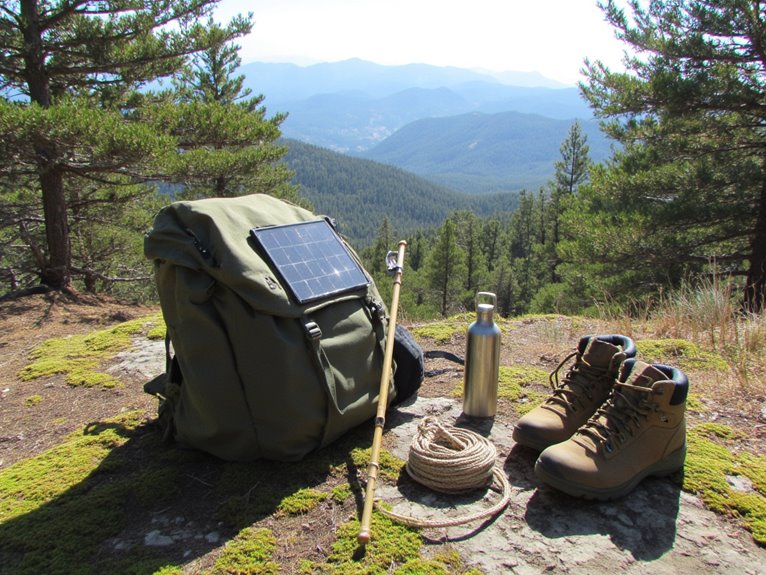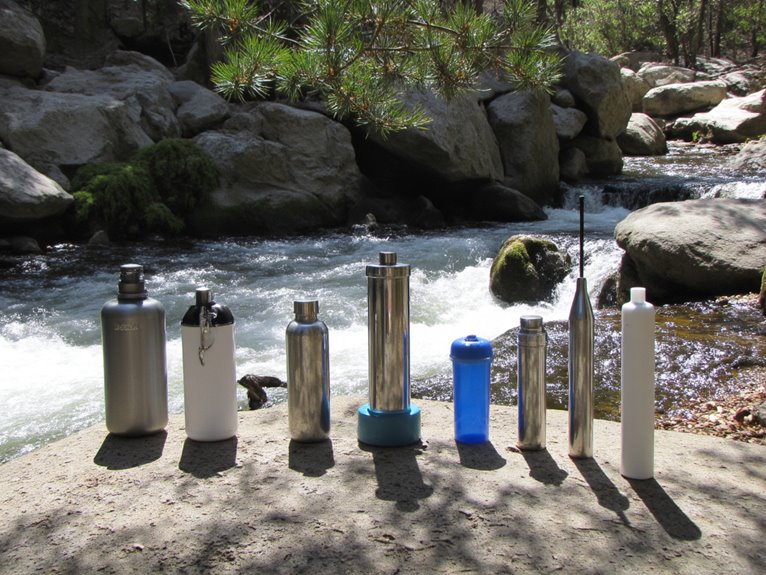How to Secure a Backpack in a Hostel?
Securing your backpack in a hostel requires a proactive approach. Choose a safe hostel locker, selecting one in a well-lit, heavily trafficked area with sturdy construction and a secure locking mechanism. Opt for a backpack with secure compartments, lockable zippers, and dedicated pockets for valuables. Keep essential items hidden and stored in secure areas, and label your backpack clearly with your name and contact information. Avoid leaving your backpack unattended, and consider using a travel safe for added security. By following these tips, you can minimize the risk of theft or loss – and discover even more ways to safeguard your belongings.
We are supported by our audience. When you purchase through links on our site, we may earn an affiliate commission, at no extra cost for you. Learn more. Last update on 25th November 2025 / Images from Amazon Product Advertising API.
Choose a Safe Hostel Locker
When selecting a hostel locker, it is vital to opt for one that is located in a well-lit, heavily trafficked area, such as near the reception desk or in a central common room, to minimize the risk of theft or tampering.
This location guarantees that your belongings are more visible to hostel staff and other travelers, making it less likely for thieves to target your locker.
Additionally, choose a locker with sturdy construction, a robust locking mechanism, and a secure key or combination system.
Avoid lockers with signs of wear and tear, rust, or damage, as these may be more vulnerable to break-ins.
Use a Backpack With Security Features
When selecting a backpack with security features, it's essential to prioritize secure compartments and lockable zippers.
These features can substantially reduce the risk of theft or loss of valuable items.
Secure Compartments Matter
A backpack with secure compartments is essential for protecting valuable items, as it provides a safeguard against theft and unauthorized access.
Multiple compartments help to organize and separate belongings, making it more difficult for thieves to access everything at once.
Look for backpacks with dedicated pockets for laptops, tablets, and phones, as well as smaller compartments for wallets, passports, and other small items.
These separate compartments can be closed with zippers or Velcro, allowing you to control access to your belongings.
Lockable Zippers Essential
Incorporating lockable zippers into your backpack's design can substantially improve its security features, allowing you to safeguard your belongings with an additional layer of protection.
This feature enables you to lock individual compartments, ensuring that your valuables are secure even when you're not actively monitoring your backpack.
Look for backpacks with zippers that can be secured with a padlock or have built-in combination locks.
This added security measure can deter potential thieves and provide peace of mind, especially in hostel environments where your backpack may be left unattended.
Keep Valuables Close and Hidden
In terms of securing a backpack, one of the most critical strategies is to keep valuables close and hidden.
This involves strategically placing essential items, such as passports, wallets, and electronics, in protected areas of the backpack to prevent theft or loss.
Secure Your Essentials
Your most valuable items, including wallets, phones, and identification, should be stored in secure, hard-to-reach pockets or compartments to prevent loss or theft.
This will minimize the risk of theft or misplacement, ensuring your essentials remain safe.
Consider using zippered pockets, hidden compartments, or pouches with secure closures to store valuable items.
Keep your passport, cash, and credit cards in a secure and easily accessible location, such as a money belt or a pouch attached to your person.
Protect Hidden Compartments
To safeguard your hidden compartments, utilize discreet and cleverly designed storage solutions that blend seamlessly into your backpack's design, ensuring thieves are left guessing.
Invest in a backpack with built-in hidden pockets or compartments, such as zippered mesh pockets or false bottoms. These features will keep your valuables, like passports, cash, and jewelry, concealed from prying eyes.
Consider using packing cubes or roll-top bags with hidden compartments to further conceal your belongings. Additionally, stash small items like keys, coins, or SD cards in hard-to-reach areas, such as inside seam pockets or within the backpack's padding.
Label Your Backpack Clearly
Clearly labeling your backpack is a vital step in securing it, as it allows lost-and-found personnel or good Samaritans to easily identify and return your property.
This is especially important in hostels where many backpacks can look alike.
Use a permanent marker to write your name, contact information, and a secondary contact method (such as an email or phone number) on the inside and outside of your backpack.
You can also attach a luggage tag or a small identification card with your details.
Make sure the writing is clear and easy to read.
This simple step can greatly increase the chances of recovering your backpack if it gets lost or misplaced during your stay in the hostel.
Don't Leave Your Backpack Unattended
Leaving a backpack unattended, even for a moment, can be an open invitation to thieves and opportunistic criminals, particularly in crowded areas like hostels and public transportation hubs.
It's essential to keep your backpack in sight at all times, especially in areas with high foot traffic.
When taking a break or stepping away, verify your backpack is securely stored in a locked locker or with a trusted companion.
Avoid leaving your backpack unattended in common areas, such as lounge rooms or dining areas, as these are prime targets for thieves.
Consider Using a Travel Safe
When traveling, a travel safe can provide an additional layer of security for your backpack and its contents, particularly in situations where you cannot keep a constant eye on your belongings.
A travel safe is a portable, tamper-evident bag that can be anchored to a fixed object, making it difficult for thieves to walk away with your backpack.
Look for a safe with a sturdy cable and a combination lock or key lock.
When using a travel safe, make sure to anchor it to a secure object, such as a bed frame or a pipe, and keep the combination or key in a safe place.



